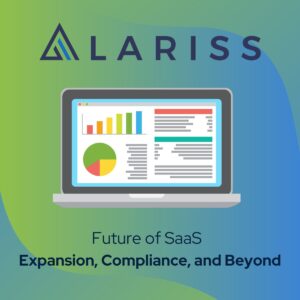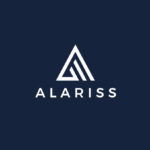Blog
Future of SaaS: Expansion, Compliance, and Beyond

November 2, 2023
Amid the pandemic, SaaS (Software as a Service) emerged as a savior, solidifying its position as a dominant force in the cloud computing realm. It became the go-to technology for businesses, and today, 70% of company software usage is attributed to SaaS. This figure is anticipated to rise to 85% by 2025.
Future of SaaS
B2B SaaS companies, with their inherently global model, can harness this upcoming economic downturn by offering software solutions worldwide. A significant number of B2B SaaS businesses (63%) are confident about their growth in 2023, with almost 60% acknowledging that a recession is an opportune time to innovate.
There are approximately 30,000 SaaS companies globally, serving 14 billion customers. North America boasts the highest concentration of SaaS companies (67%), thanks to pioneering tech development and the presence of industry giants like IBM, Oracle, and Microsoft. The US houses the most SaaS companies (17,000) globally, followed by the UK and Canada.
Expanding your SaaS product in the USA
Positioning your SaaS product for success in North America is vital. While Horizontal SaaS addresses a single business function across multiple industries, Vertical SaaS, designed for specific industries, is gaining prominence. High-spending industries on Vertical SaaS include Banking and Finance, Media and Entertainment, Government, Manufacturing, Healthcare, Retail, Energy and Utility, and Education.
B2B SaaS sales cycles are unique and characterized by quick sign-ups without lengthy meetings. To succeed, agile marketing, content marketing, and account-based marketing are effective strategies.
Key Metrics to measure the expansion of B2B SaaS
Churn Rate
Churn, in the context of a business, especially in the software-as-a-service (SaaS) industry, refers to the rate at which customers or subscribers stop using a service or cancel their subscriptions within a specific period. Churn is a critical metric because it reflects customer attrition, which can significantly impact a company’s revenue and growth.
To calculate churn, you typically use the following formula:
Churn Rate (%) = (Customers Lost during a Period / Total Customers at the Beginning of the Period) x 100
Here’s a breakdown of the elements in the formula:
- Customers Lost during a Period: This represents the number of customers who stopped using or canceled their subscription to your service during the specific time frame you’re measuring.
- Total Customers at the Beginning of the Period: This is the number of customers you had at the start of the same time frame. In some cases, this may be calculated differently, such as using the average number of customers throughout the period.
Once you have these numbers, plug them into the formula to calculate the churn rate as a percentage.
A high churn rate can be detrimental to a SaaS business, as it means you’re losing customers faster than you can acquire new ones. Monitoring churn is essential for understanding customer satisfaction, identifying issues with your product or service, and implementing strategies to improve retention and reduce attrition.
NDR
In the world of B2B SaaS, understanding how to measure expansion is crucial, and one of the most critical metrics for this purpose is Net Dollar Retention (NDR). NDR is a metric expressed as a percentage of Annual Recurring Revenue (ARR), and it’s calculated using the following formula:
NDR (%) = ((Starting ARR + Expansion – Churn) / Starting ARR) * 100
When your NDR exceeds 100%, it’s a powerful indicator that your revenue from existing customers is growing. This means it’s compensating for any losses due to customer churn. It demonstrates that your income can increase even without acquiring new customers. Conversely, if a company’s NDR is below 100%, it indicates a decline in revenue from existing customers, highlighting the need to acquire new customers to maintain growth.
Understanding these metrics is fundamental for B2B SaaS businesses, as they offer insights into customer retention, revenue expansion, and the overall health of the business. By monitoring your NDR and addressing issues like churn, you can develop strategies to ensure long-term growth and success.
Four primary drivers of revenue expansion:
- Usage Growth: This strategy aligns pricing with increased usage volume or users. It can be based on metrics like seats, storage, events, or other scalable units. Notable examples include usage-based pricing (pay-as-you-go) and per-user pricing.
- Higher Tier: Encouraging customers to upgrade to higher-tier plans. This strategy offers distinct programs with varying features, each representing greater value. Effective added-value communication through trials, in-product recommendations, and sales outreach is vital.
- Add-ons: Offering optional features or services is a powerful yet often underutilized expansion tactic. Premium customer support is a common add-on. The key is to identify features used by less than 40% of the paid user base and offer them as add-ons.
- New Products: This strategy comes into play in the later stages of a company’s growth. It involves creating multiple complementary products and services. Cross-selling opportunities are identified and communicated to customers. Often, companies bundle multiple products with incentives like discounts to encourage simultaneous purchases.
Compliance is vital
To ensure the security and credibility of a SaaS platform, it must adhere to various compliance requirements. These requirements are essential for safeguarding data, maintaining legal compliance, and instilling trust among customers and investors. Here are some key compliance categories and associated regulations:
1. Financial Compliance:
- IFRS Compliance: International Financial Reporting Standards ensure the consistency and transparency of financial reporting, particularly in the international context.
- GAAP Compliance: Generally Accepted Accounting Principles dictate accounting standards widely used in the United States.
- ASC 606 Compliance: Accounting Standards Codification 606 sets guidelines for revenue recognition in financial statements.
2. SaaS Data Security Compliance:
- SOC 2 Certification: This certification focuses on the security, availability, processing integrity, confidentiality, and privacy of customer data at service organizations.
- PCI DSS Certification: The Payment Card Industry Data Security Standard is crucial for SaaS companies that handle credit card payments to protect against fraud.
- ISO 27001 Certification: This international standard specifies the requirements for establishing, implementing, maintaining, and continually improving an information security management system.
3. SaaS Personal Data Privacy and Protection Compliance:
- GDPR Compliance: The General Data Protection Regulation governs data protection and privacy for individuals within the European Union (EU) and European Economic Area (EEA).
- HIPAA Compliance: The Health Insurance Portability and Accountability Act sets privacy and security rules for protecting patient health information in the United States.
- CCPA Compliance: The California Consumer Privacy Act grants California residents specific rights over their personal information and imposes requirements on businesses that collect or sell such information.
Compliance with these regulations and frameworks ensures that SaaS platforms handle data responsibly, maintain the security and privacy of customer information, and adhere to legal standards. It also plays a significant role in building trust among users and investors, making the platform more attractive and credible.
Alariss Global is your trusted partner in expanding your SaaS business in the US while ensuring seamless compliance with the complexities of the local regulatory landscape. We understand the critical importance of adhering to financial, data security, and personal data privacy compliance requirements, and we’re here to guide you through the entire process. Our expertise in these areas, combined with a commitment to meeting the highest standards, ensures that your platform remains secure, credible, and attractive to customers and investors. To discover how Alariss can address these challenges and provide invaluable insights, we invite you to book a free demo with us.
Let us help you navigate the path to success in the US market while ensuring compliance with all necessary regulations. Book your demo today and embark on a journey to unlock the full potential of your SaaS business.





